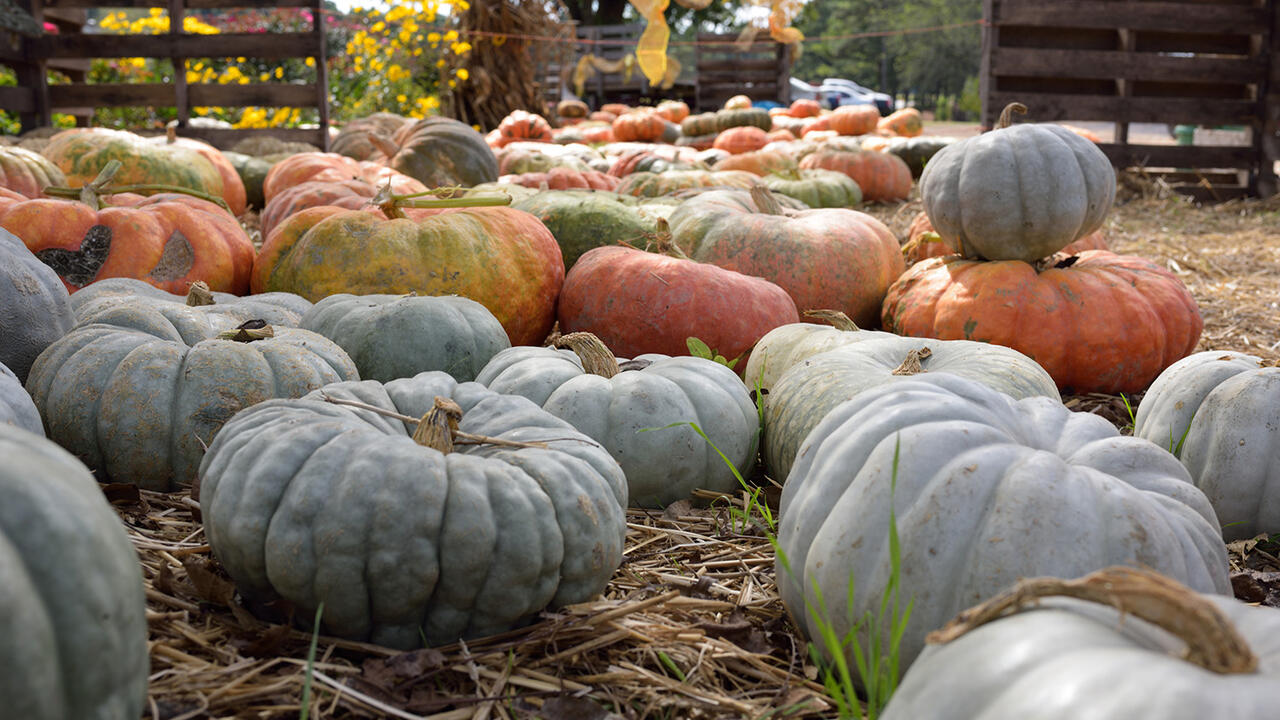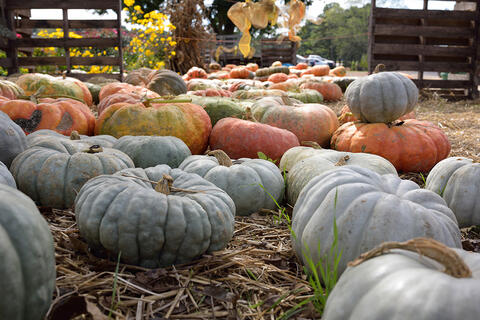Extension for Real Life
Which pumpkins are best for eating?

116_201410120_mitchell_farms_kwh
Most of the time I consider myself a person who exercises self-control. But take me to the pumpkin patch and I lose all reason. So many colors, shapes, and textures! Tiny pumpkins! HUGE pumpkins! I don’t want just one of each, I want multiples of everything available.
But before I pile my wagon so full I can’t pull it, my frugal side sets in. What am I going to do with all of these pumpkins, especially when it’s time to make way for other seasonal decorations?

Cook with them of course! With a little planning and attention to the varieties available, I can have sweet or savory pumpkins and squash ready for desserts, soups, side dishes and more.
Some pumpkins have a higher sugar content than others. Choose sweet varieties, such as Cinderella and peanut pumpkins if you want to bake pies, quick breads, or other desserts. Turban squash works well in savory dishes. Not sure what you want to cook? A Hubbard squash can be used in either sweet or savory dishes!
Now you can have your pumpkins and eat them too!
For more tips on cooking with pumpkins, check out this episode of The Food Factor.